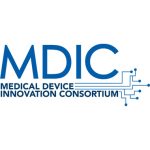A surgeon’s workflow inside of the operating room, combined with their workload, has been studied widely but still stands to be better understood. A surgical workflow is an established pattern of processes that a surgeon repeatedly performs that minimize the potential occurrence for mistakes and complications during a procedure. There are hundreds of factors that can alter any particular workflow, including how equipment is arranged in an OR, the type of equipment in the room, who is assisting the procedure, whether assistive technology robots are utilized, how many disruptions the surgeon experiences during a surgical procedure and more. A surgical workload encompasses both the physical and cognitive workload that occurs during a surgical procedure, combined with case complexity, distractions, and case difficulty.
As surgeries become increasingly complex and involve more sophisticated technology, the mental and physical demands on surgeons and their teams are expected to increase. As an industry, we need to thoughtfully consider how each piece of technology introduced into operating rooms will impact existing surgical workflow and workloads, as a surgeon’s intraoperative workload plays a crucial role in ensuring the safety and effectiveness of surgery.
Surgical performance and outcomes may be jeopardized by adverse, time-consuming operating room conditions. In a review of 38 research studies, it was found that 20% of operating time was attributed to surgical workflow disruption. In addition to impairing technical performance, frequent disruptions also pose a safety risk to patients. Because of the industry’s piecemeal approach in bringing new technologies into the OR, we have created arduous workflows that require significant human intervention (and patience for the adoption curve) to work as intended.
Considerations for MedTech Developers
There are many benefits and drawbacks to consider when introducing a new technology into a workflow. A device manufacturer may want to provide a product to a hospital that helps in one element of the workload. But are they considering the broader impact the device will have on the entire workflow?
A study examining fluoroscopy and navigation tools found that when an O-arm navigation system was used during lumbar fusion procedures, the surgeon’s intraoperative radiation exposure was zero and patient exposure was less than a half that seen when a C-arm navigation system was used. This illustrates why it is critical to examine variables and understand the broader implications of introducing a new piece of technology into a workload. The questions we should be asking are: Does the introduction warrant the impact? Are the clinical outcomes that much better given the increase in time for the patient under anesthesia, the increased radiation exposure and the cost per hospital minute?
Often, the medical device industry comes up with an idea for a product without giving much consideration into how the device or product will fit into existing workflows and workloads. The product is created, a salesperson convinces a purchaser that it’s an essential item for their hospital, and the rest is history.
The standard golden rule needs to be this: If a product is going to extend a surgical time commitment or extend a surgeon’s workflow, the advantage that it is providing must be significant. Saving 15 minutes at one stage of the procedure but costing 15+ minutes at another point doesn’t convince me that a product is essential to the OR.
For example, if a surgeon conducts a spine surgery completely freehand, without any kind of navigation or robotic assistance, their accuracy may not be as precise as if they had used fluoroscopy or navigation. But if they’re able to introduce other technologies to help place pedicle screws (such as in robot-assisted surgery), the procedure will likely take longer but will add precision, benefiting the patient and potentially affording the surgeon extra years of dexterity throughout their career.
Consider that 159 types of robotic surgery prototypes were invented between 1998 and 2005. How beneficial they are to spine surgery as compared to freehand procedures seems clear, yet it remains a controversial topic that has been studied in systematic reviews and meta-analyses.
A 2020 systematic review and meta analyses found one study showing that robotic guidance can reduce revision surgery due to screw position issues. Two other studies determined pedicle screw placement is equally accurate in both freehand and robot-assisted techniques, and a third found insufficient evidence that robot-assisted surgeries supersede freehand techniques. This is an appropriate level of scrutiny for a piece of technology that is used in ORs around the world each day. Imagine if we brought this level of investigation and curiosity to all new products that try to make their way into the OR.
You Cannot Improve What You Don’t Measure
Surgeons are expected to manage complicated workflows with large workloads. The medical technology industry plays an important role in maintaining a healthy balance between these two components. When developing a product or surgical solution, the industry needs to better understand the responsibility it has. Most often, engineers and product marketers are trying to create a product that they can sell and that will generate revenue. They have the ability to thoughtfully develop technology that will solve workflow and workload bottlenecks in a way that can advance safety, accuracy and time efficiency.
The long-term goal in product development is to benefit the surgeon and the patient, but that important distinction has gotten lost as product revenue has taken precedence over introducing beneficial innovations to the operating room. It’s important to understand that in any kind of surgical technology development, there are going to be trade-offs.
Industry has contributed to this uneven workflow and workload issue inside the OR, and I believe that our industry can fix it. Surgical performance and safety are affected by surgeons’ subjective workloads. By working with stakeholders, partnering with surgeons and better understanding their needs, we can bring forward solutions that will simplify surgical workflows and help create more manageable workloads.
As an industry, we need to consider all aspects of a workflow before adding or subtracting from it. You cannot improve what you do not measure. If we’re only looking at the small benefit to a company and not the entire picture—including patient outcomes—how can we claim progress? We should prioritize developing technologies that make a lasting impact in patient outcomes and solve surgical workflow issues.







